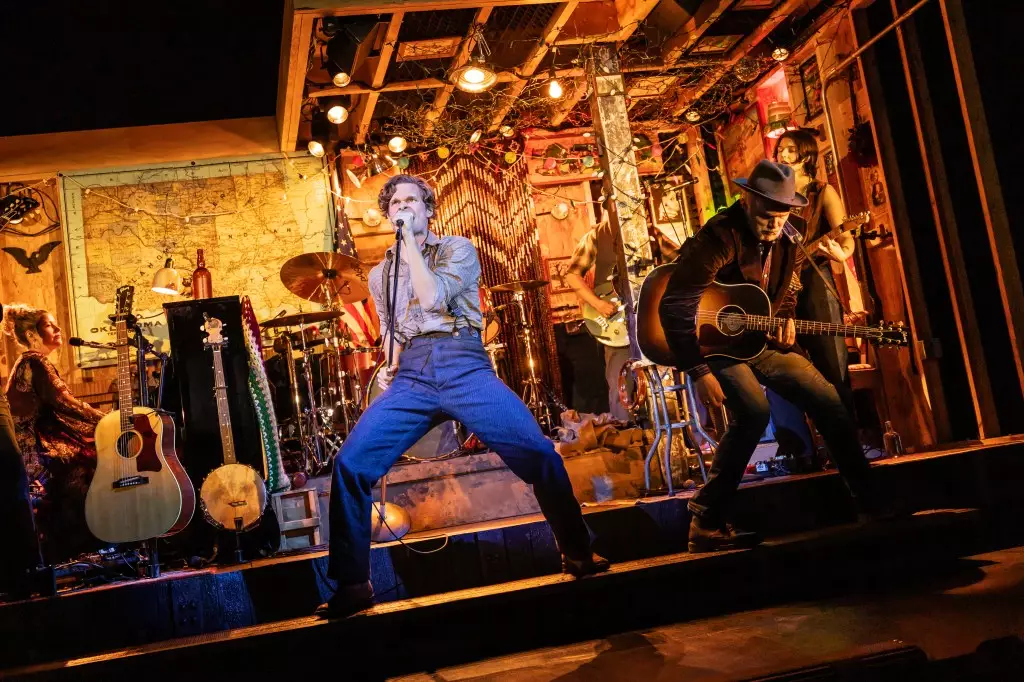As the culmination of the Tony Awards approaches, set for June 8, the Broadway landscape is alive with activity, reflecting the intricate dynamics of competition, audience engagement, and the explicit correlation between nominations and box office performance. As shows vie for accolades, the varying impacts of these nominations create a fascinating tapestry showcasing both success stories and cautionary tales. Understanding these dynamics reveals not only the challenges but also the resilience of the industry itself as it prepares to reward exceptional talent and productions.
Contrasting Wins and Losses
A closer examination of the theater season, particularly during the week ending May 18, illustrates that of the numerous contenders for nominations, a sizable fourteen productions reported box office downturns, albeit minor. Conversely, ten shows demonstrated exceptional growth in revenue, hinting that the buzz surrounding the nominations can serve as a double-edged sword.
Take, for example, “Redwood,” featuring the illustrious Idina Menzel. Despite receiving no nominations and announcing an early closure, it experienced a surprising $191,581 surge in its final week. This instance embodies the powerful allure of star power and last-minute interest, underscoring how anticipation can defy expectations—even for those sidelined by the nomination process.
In stark contrast, “The Picture of Dorian Gray,” recognized with six nominations, reaped a boost of $120,388. However, viewing this through a critical lens suggests that the impact of additional performances may be contorted by the nomination hype. With this fluctuation in attendance comes the idea that even during a successful week, external factors still play significant roles in box office earnings.
Distilling the Gains
Among those making notable headway, “Good Night, And Good Luck” and “Sunset Blvd.” exhibited impressive gains of $143,803 and $146,711, respectively. Each was buoyed by a solid collection of nominations, with the former showcasing the star power of George Clooney. These productions exemplify how critical acclaim can fuel commercial success, highlighting the symbiotic relationship between artistry and financial viability.
The show “John Proctor Is The Villain,” rounded out with seven nominations, performed notably well at the Booth Theatre, with increased attendance reflecting a heightened interest likely spurred by its recognition. This combination of substantial nominations and audience enthusiasm converges to suggest that accolades can amplify awareness, thereby translating to tangible revenue gains.
Nevertheless, not every contender is capturing lighting in a bottle. Shows such as “Smash” and “Gypsy,” although armed with nominations, saw declines in box office revenue. Here, a critical perspective suggests that relying solely on nominations may not be enough in a crowded marketplace. Factors such as production quality, star performance, and overall audience experience could weigh heavily on ticket sales.
The Hidden Struggles of Shut-Out Shows
Interestingly, several shows shut out from nominations maintained steady box office performance. “Othello,” remarkably, pulled in over $3 million, exhibiting that established productions could sustain their audience despite a lack of recognition. This resilience raises an important question about the necessity of nominations in defining a show’s success.
In a theater landscape where some shows are effortlessly buoyed by critical acclaim, others demonstrate that audience love can trump situational recognition. Shows such as “Death Becomes Her,” while Nominated for multiple awards, faced negligible declines, emphasizing that profitability can exist simultaneously with acclaim, but it isn’t always dictated by it.
The Broader Context of Broadway
From a macro perspective, the status of Broadway overall reflects a resurgence with gross earnings reaching $44 million in the past week alone. This represents a 2% increase from the prior week and a remarkable 22% increase year-over-year. Such metrics indicate a flourishing marketplace that, despite its challenges, continues to captivate audiences from near and far.
Furthermore, statistical data suggests the collective strength of the Broadway community as a whole—a point that should not be lost amid the noise of individual successes and failures. With a total gross of over $1.8 billion this season, Broadway’s enduring appeal speaks volumes about public sentiment towards live theater, desiring a return to the transformative experiences that only productions can offer.
This strange juxtaposition of success and struggle underscores the ever-present challenge theater faces: to remain relevant, imaginative, and captivating, despite the often fickle nature of public opinion and industry recognition. It is a reminder of the industry’s profound impact on culture, art, and society at large—one that holds a mirror to our collective human experience.
The vibrant heartbeat of Broadway remains ever-tentative as shows vie for relevance, each narrative contributing to a larger story of resilience in the face of ongoing challenges and transformations. This season is not solely defined by awards, but also by the unwavering spirit, steadfast creativity, and deep passion that manifests on stage each night.


Leave a Reply